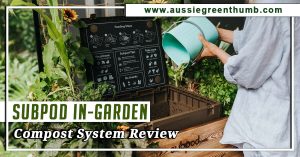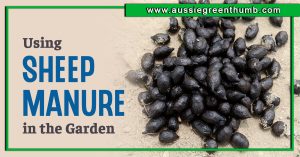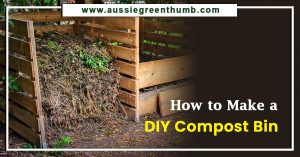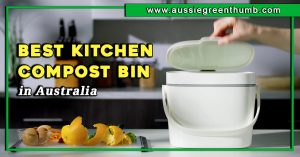Compost is probably the most easily misunderstood material on the planet, largely because there is no one accepted definition of what (literally) constitutes compost. In this composting guide, we will look at everything from what it is, to how to make it, but crucially, what it is actually doing for us.
Because, like anything in life, if you are putting time, effort, or money into something, there must be some sort of reward. Thankfully, with compost, there is. But the reward might not be what you expect.
More...
What is Composting?
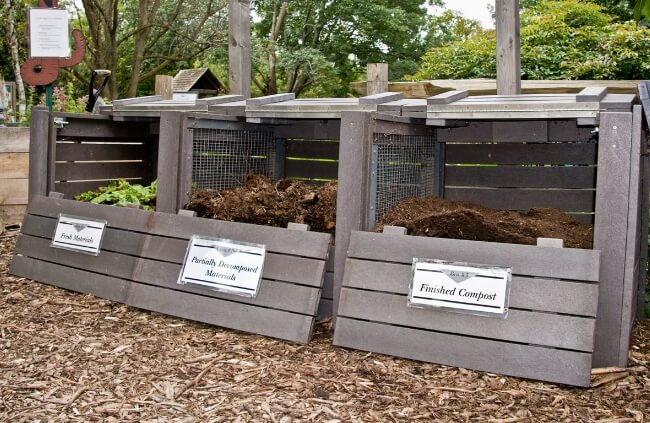
Compost is any organic material that has rotted down (‘composted’) to a reasonable consistency, ready to be used in the garden.
It can be made from leaves, grass clippings, palm fronds, paper, shredded timber, fruit, vegetables, vines, dust, hair, cardboard, manure, dried bones, eggshells, feathers, and pretty much anything else that occurs naturally on this beautiful planet.
In terms of physical consistency, compost can be part-rotted, rotted, or humus (in that order) and the nutrient levels will drop the more it rots. As it rots, it may lose nutrients, but it also becomes a more effective soil improver, unlocking nutrients in the soil.
Compost Isn’t Soil
So that’s what compost is, but it’s also important to understand what compost isn’t. Compost isn’t soil. Soil is, like compost, composed of organic materials, rotted down over millennia, and washed to where it is by alluvial or geological events.
The difference, in basic terms, is that soil is unique to its setting, with various minerals, nutrients, and fine rock particles (lime, sand, clay, chalk and granite are the most common soil types in Australia).
These, rather than the rotted organic materials, define a soil’s mineral makeup, the acidity, and its drainage characteristics. Compost can be used to improve soils, change their nature, or just to feed the plants growing in them.
Understanding Compost, and the Words We Use to Describe It
Before we go on, it is worth simplifying some of the most common words and phrases used to describe the process of making compost, or what it is, because it is all well and good referring to humus and loam, but unless you know what they are, compost is just compost.
Compost dictionary:
- Organic Matter: Organic matter can be a misleading term. When gardeners talk about ‘organic matter’ they mean a ready-to-use material like compost, rotted-manure, leaf-mould, etc.
Don’t get confused between this and ‘organic materials’ which is the stuff that goes into making them (leaves, grass, fresh manure, etc.). - Humus: Humus (with one ‘M’ – not the dip!) is the completely rotted product of any organic materials. It is fine, dark brown, sometimes black, and the texture of loose, moist soil.
Humus takes four to five years to make through regular composting, and is very low in nutrients. However, it holds on to nutrients better than anything else, and unlocks minerals in the soil so they become accessible to plants. - Loam: Loam is the target for any serious gardener. It is the general term for a loose-textured, well-drained, dark soil, made for a mix of sand, humus, and clay.
It holds water, drains, and releases plenty of naturally occurring nutrients and minerals. The more you mulch your garden with your own compost, the faster you will achieve ‘loamy’ soil. - Soil Improver: In garden centres, you will often see bags of compost labelled as ‘soil improver’. This is nearly always an organic, peat-free compost, mixed with very well-rotted manure.
There is little nutrition in this, and the idea is to apply it liberally (either by digging through, or mulching) onto poor soil. It will break up heavy clay, and add moisture retention to sand. In both cases, it will make nutrients more accessible. - Green & Brown: The classic mix that everyone is told to start their compost with, green and brown, is code for nitrogen and carbon. Carbon is present in any dried or dead organic materials.
Leaf litter, Dried grass clippings, even paper and cardboard. Green waste is a good source of nitrogen. The two are the primary ingredients of composting, and both are required to create the conditions for healthy decomposition. - Soil Bacteria: There are thousands, if not millions of beneficial bacteria in your compost, and fungal activity that supports plant development, and helps to establish true networks of roots around your garden.
Making your own compost boosts the presence of all of those bacteria in your garden is much more beneficial than buying compost from elsewhere. - Soil life: Compost would not be possible without soil life. Soil life simply refers to worms, some types of slugs, beetles, woodlice, ants, nematodes, and every other tiny creature working their way through your piles of decaying garden waste, to turn it into useful compost.
- Aerobic and anaerobic: Aerobic decomposition is what you should aim for with most compost. It means there is good air circulation, providing a habitat for bacteria and soil life to promote decomposition.
Anaerobic decomposition is usually best avoided, but some types of composting rely on it, which we will look at later.
Benefits of Composting: Why Make Your Own Compost
Making your own compost is a cost-effective way to improve your veggie yields, boost the vigour of flowering shrubs, and reduce your household food waste to near zero. But don’t take it from me, let’s look at the evidence…
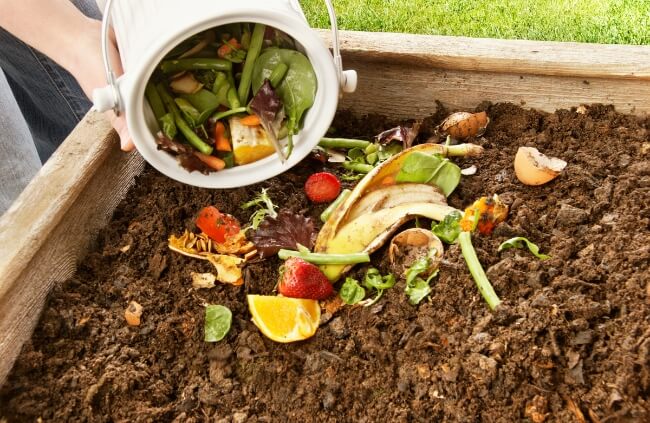
Composting Reduce Your Waste
Household food waste, according to the United Nations, accounts for 8-10% of global greenhouse gas emissions. Composting is not the only answer here, as much of your typical food waste isn’t compostable (fats, oil, dairy, meat, and processed food can’t be composted in conventional compost setups).
But it is part of a wider solution. Composting at home is doing your part for the planet.
Retain Essential Soil Bacteria
Your garden soil is packed with minerals, nutrients, and bacteria. All of it is essential for plant life. By gathering your fallen leaves, grass, and making simple organic compost at home, you not only reintroduce those essential elements of growth, you increase them.


Get Your Free Guide:
Master Growing Australian Natives eBook
A Must Have Complete Guide for Every Australian Garden
Get Your Free Guide:
Master Growing Australian Natives eBook
A Must Have Complete Guide for Every Australian Garden
Composting is like yeast for your garden. It takes the basic ingredients you throw at it, and turns them up to eleven. According to Cornell University's ‘Cornell Composting’ project, bacteria make up 80% of the billions of microorganisms found in a single gram of compost.
Composting Helps You Save Money
Composting is just part of zero-waste living, but if it is the only part you do, it could still save you hundreds of dollars a year in one of the most basic garden purchases. According to the Conservation Law Foundation composting is the most cost-effective way to save money, and has knock-on effects on your own pocket.
Take Control of Your Soil
Compost is an important part of landscape management. It improves soil structure, boosts moisture retention, and increases drainage in equal parts. While it might sound contradictory, it is straightforward.
The important phrase put out by the US Composting Council is ‘balancing soil conditions’. So regardless of the soil you add compost to, it provides balance, giving you control of your garden soil.
Composting Improves Your Own Wellbeing
It is not just the benefits of compost to plants that matter. There are benefits of compost for us too. Speaking personally, I rely on compost for my well-being. The joy, as well as physical exercise and the endorphins from it, that come from turning a compost pile regularly, are palpable and serve to settle my overactive mind on a weekly basis.
Gardening on prescription shouldn’t be a ground-breaking idea when breaking ground has been known to improve our mood for centuries. But still, the idea of getting our hands in soil, and working our own compost as a general mental health salve is relatively new in formal medicine.
Compost improves our mood by:
- Reducing our waste, and making us feel better about our impact on the planet
- Offering exercise and releasing endorphins
- Saving us money, and reducing financial stresses often associated with gardening
- Improving our garden’s health, and giving us a greener space to enjoy
- Gardening, whether active or passive, produces cortisol to reduce stress
- Improving our yields, so there is more homegrown produce to enjoy
Types of Compost, and How to Make Them

While compost can be divided into infinite categories, there are just a few that really matter in terms of understanding how they are made, and the impact they will have on your garden.
I have split compost into a few simple categories, and below, we will look at the pros and cons of each:
- Garden compost
- Leaf mould
- Wood & bark compost
- Seed & cutting compost
- Rotted manure
- Worm castings
- Teas and fertilisers
- Mushroom compost
Garden Compost
Garden compost is a general term for compost made from a mix of green and brown garden waste. Our most basic compost heap is perhaps a good example of this, with a fairly even mix of straw, fresh grass, and pretty much everything else that comes out of the garden.
How to Make Garden Compost
Aim for an even mix of brown and green waste to make a simple garden compost. We use dried leaves, rabbit bedding (straw, hay and poop) and any old newspapers that get shredded up and layered over any green waste (usually grass clippings, or veggies plants that have finished for the year).
Turn it as regularly as possible, and use it when it has rotted down to an even brown colour with a fine, flaky, but slightly moist texture. During decomposition, it should be hot in the centre of the pile.
Nutrient levels: Typical nitrogen levels in rotted compost are around 0.5%, with potassium and phosphorus at 1-2% each.
Pros:
- Free to make
- Easy to make
- Adaptable
- Space efficient
Cons:
- Slow process for really good compost
Leaf Mould
Leaf mould is pure decomposed leaves. It takes about a year to make properly but can be used sooner. Its best use is as a mulch, but very well-rotted leaf mould can be used for seed-starting, or as a soil additive to boost moisture retention in pots and containers.
How to Make Leaf Mould
Leaf mould is super simple to make. In autumn, gather up all the fallen leaves you can and pile them up (we walk around our local park with bin bags to get more, but if you’d rather not look insane, just stick to what’s already in your garden…).
Once gathered, run your lawn mower over the leaves to break them down as small as possible, and then pile them up in a compost bin, or chicken wire structure. Leave it open to the elements, and after twelve months you will have a gorgeously friable mulch or soil improver.
Note: This method and purpose are the same for bracken compost.
Nutrient levels: Leaf mould is not about nutrients it is about soil improvement. Nitrogen levels in leaf mould tend to be around 0.5%, with phosphorus levels sometimes as low as 0.2%, and potassium barely traceable.
Pros:
- Incredibly easy to make
- A great way to tidy up your garden in autumn
- Quick to make spring mulch
- Fastest way to make fine compost or soil improver
- Incredible moisture retention
Cons:
- Limited nutrients
Rotted Manure

Rotted manure, if regularly turned, will eventually become a usable compost that can be planted directly into, but in general it is used as a mulch. In both cases, it adds nutrients, minerals, and helps to lightly acidify the soil, making other nutrients more accessible to most plants.
How to Make Rotten Manure
Pile up horse manure in as generous a quantity as you can get your hands on. Turn it as regularly as you can to make sure it rots evenly (once every two or three months if more than adequate).
Use it as a mulch after 6 months, or as a compost after 12-18 months (depending on consistency and smell).
Nutrient levels: Horse manure is packed with positive bacteria, fungal activity, and earthworms, in addition to an NPK of around 1-1-1 (or lower).
Pros:
- Easy to make
- Packed with nutrients for plants
- Easy to tell when it's ready
- A little goes a long way
Cons:
- Can be expensive unless you find a local supplier
- Must be rotted for at least six months to be safe on most plants
Wood & Bark Compost
Wood and bark composts are one of the most important parts of our allotment composting system. We get literal tons of the stuff dropped off every summer by tree surgeons who are more than happy to get rid of shredded logs.
It is a great mulch, and fairly inert, and with the right mix of deciduous trees in the mix, it can be applied directly to the ground to compost in situ.
How to Make Wood and Bark Compost
Either mulch the ground with shredded deciduous wood to make compost on the ground, or pile shredded logs and bark in 1m cubic sections where it will rot down to a usable mulch within around twelve months.
If left for three or more years without turning, shredded wood and bark compost makes a rich and highly moisture-retentive compost that can be used to plant directly into for annual veggies.
Nutrient levels: This type of compost has virtually no nitrogen, so once composted can be used as the base for other composts to mix through.
Pros:
- Free materials
- Easy to make
- High moisture retention in the finished product
- Useful long-term peat alternative
Cons:
- Takes a long time to rot
- Success will depend on the specific trees used to rot down in the first place
Seed & Cutting Compost
Making seed and cutting compost at home is a little bit more complicated. It requires a virtually nutrient-free compost, but with good moisture retention. A very well-rotted leaf mould, mixed with sandy garden soil can do the trick.
If you have access to worm castings too, they have antimicrobial and anti-fungal properties that really help to protect seeds for potential infections during germination.
How to Make See and Cutting Compost
Start with a base leaf mould and sandy garden soil. Dry the mixture out for a few days, and then sieve it completely, adding worm castings (just a few picked from the lawn will do) before filling seed trays, ready to sow.
Nutrient levels: Ideally… none
Pros:
- Inert sowing mix with minimal nutrients
- Good moisture retention
- Adding worm castings improves germination
Cons:
- Fiddly, and making more bespoke seed composts often requires buying materials like perlite and sand in.
Worm Castings

Worm castings are another type of compost altogether, offering magical microbial action that actively supports plant health. The only problem… it takes a long time to make an amount that will feel worth it.
Thankfully, a small amount really does go a long way, and it is useful for feeding houseplants and garden containers alike.
Nutrient levels: Up to 5-5-5 NPK, but very variable
Pros:
- Incredibly good seed compost additive
- Useful way to reduce kitchen waste
- Great experiment for kids
Cons:
- Takes a long time
- Make limited amounts of compost
Teas and Fertilisers
Making compost tea of any kind is an easy process. Nettle tea and comfrey tea are the most popular and produce nitrogen-rich fertilisers for use all over the garden.
How to Make Compost Tea and Fertiliser
Half fill a bucket with shredded nettles or comfrey and cover it with water. Place a lid on the bucket and leave it somewhere out of the way for a few months.
When you come back to it, it will absolutely stink, so sieve it, add the thick liquid to a bottle, and use it by diluting it in water for a free plant fertiliser.
Nutrient levels: Comfrey tea is richer than nettle tea, and nutrient levels will vary highly depending on where they are grown, but they both tend to be high in nitrogen, potassium, and magnesium.
Pros:
- Free
- Easy to make
- Quick and simple plant food
- General purpose feed for most plants
Cons:
- The process stinks to high heaven
Mushroom Compost
The chances of being able to make your own mushroom compost at home are slim, but I wanted to include a brief note about this well-loved compost. Mushroom compost is a soil improver, rather than a compost.
It is the by-product of mushroom farming, and essentially just the leftover compost that has been used to fill bags that mushrooms are grown from. It is a useful garden compost, but should not be mistaken for a nutrient-containing compost.
Tips for Making the Best Compost
Apart from compost tea and worm compost, which both need temperatures around 14-20°C to develop properly, all other composts require fairly identical conditions to break down with maximum efficiency.
Below, we will look at some standard rules for making and caring for your compost pile, regardless of the materials you are composting.
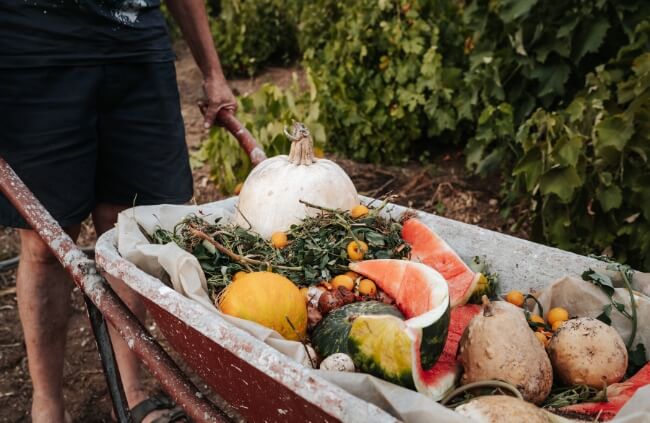
Where to Place a Compost Bin
It’s hard to pin down one element of compost-making that’s the most important, but location is definitely a contender. If you’ve had a go at making compost, like most of us when we first do it, it’s probably a safe assumption that it was in a shaded, hidden, corner of the garden where it’s out of view.
It is not necessarily wrong, but if you want guaranteed good results, there are definitely a couple of key location rules for compost.
Heat & Light
Light is important for compost, not because anything in the heap is photosynthesising, but because sunlight produces heat > heat promotes bacteria > bacteria promotes decomposition > decomposition promotes soil life digestion > digestion produces finer compost faster.
Choose a bright spot in your garden, with at least 6 hours of sunlight per day. I do not mean put your compost bin in full view, in the centre of a lawn, but definitely keep it somewhere reasonably bright.
Rain
Rain is not essential for compost, but it is the easiest way to maintain moisture levels in your compost pile without manual irrigation. If you have a bright spot with reasonable drainage, that does not get used, and has no overhanging trees, that is ideal for compost.
If you cannot place your compost somewhere without shelter, do not worry – there are other ways to produce healthy moist compost (pouring a bucket of water over it when it is looking dry will work fine, or using the hotbox method, which locks in moisture and boosts humidity).
Soil depth
This bit really is important. The depth of soil beneath your compost bin is incredibly important. Worms live, primarily, in the top 15-30 cm of soil. Placing a compost bin over concrete, flagged ground, or a thin layer of soil over stone, will limit the soil life with access to your compost bin.
You can get around not having soil to place a compost bin on by adding worms into your compost, and using a compost starter (we will look at this in a moment).
What to Add to Your Compost, and Why
Different types of compost need different materials added to them as a base ingredient, but any green garden or kitchen waste, even if it's mouldy, will be fine if added to your compost. Refer to the compost types above for more specific compost ingredients.
If you are trying to produce specific composts like leaf mould or bracken mulch, then stick to the named material to get the desired result.
What Not to Put in Your Compost, and Why
Avoid any fats, oil, dairy, or heavily protein-rich materials for your compost pile. These materials can work in hot composting, or fermentation composting like bokashi but tend to promote harmful bacteria, unfriendly moulds, and attract rodents.

Turning Your Compost
Once you have got your compost set up, turning it is important, but not necessarily essential. The type of compost you are making will define how often you do this.
The process is as it sounds, just get a strong garden fork, and turn it over, so the most rotted part is at the top, and the least rotted part is at the top. I do this once every two or three weeks and get usable compost in around six months.
For speedier compost, you can turn a small compost pile (one cubic metre) every day, and get usable compost in as little as two weeks provided it is reasonably moist, and has plenty of soil thrown into the initial mix to add bacteria.
Adding worms or ‘compost starter’ to your compost
As well as the basic set up and care tips, there are some simple ways to boost your compost. Adding worms, woodlice, and even slugs to your compost heap speeds up decomposition.
This can be done by directly placing them individually into compost, or by adding a handful of garden soil to your compost heap very so often. This tops up naturally occurring garden fungus and bacteria, and introduces soil life from the garden into your compost.
Compost starter is a general term, and can be used to describe adding handfuls of soil, or as a specific product title, usually for a box of dried ‘compost starter’ including microorganisms and nitrogen-rich materials.
When is Compost Ready to Use
Compost is usually ready to use after about six months, but larger compost heaps without turning can be used around the garden after twelve months. The contents of your compost will define when it can be used too.
If starting with fresh horse or cow manure, it will need to be left for around 6 months to rot, until it no longer smells and the ammonia has faded. The colour will change from an orangey-brown in the centre of the heap to a rich black.
If regularly turned during this time, horse manure can be a lovely consistency after 6 months. Even after three months, garden compost can be used to mulch your beds and borders.
It will be mostly rotted, and should have a slightly chunky consistency, with plenty of larger pieces still visible in the mix.
How to Use Compost
By knowing more about your compost, you can use it pretty much all year round, and at any time in its decomposition. Fully rotted compost, with any ingredients, is called humus.
It is devoid of nutrients, but very effective at improving soil structure, whereas part-rotted compost with 2-3 cm pieces scattered through a coarse but light-textured material that just about holds together when squeezed has plenty of base nutrients, and is full of bacterial activity.
Because compost can vary so much, so do its uses.

Use Compost as a Growing Medium
Compost can be used as a direct growing medium, but its texture will not last more than a year as its nutrients leach out, and its structure reduces.
The best use for compost, if you intend to grow directly into it, is when starting seeds, seedlings, or growing on annual veggies like tomatoes and peppers, which thrive in pure compost, especially with added liquid fertiliser through the growing season.
You can use any type of compost in this way, whether it's worm castings, manure-based compost, or leaf mould, but all have the same limitations over time.
Using Compost as a Soil Improver
The more rotted your compost is (again, regardless of the type of compost), the more effective it is as a soil improver. This is just the simple and time-proven nature of organic matter. It holds your soil structure exactly how it should be, working beautifully towards that dreamy loam us gardeners long for.
To use your own garden compost as a soil improver, turn it regularly for at least a year (up to four years for the finest humus), and then dig it through areas of poor soil in the garden. It’s an incredibly quick way to improve soil structure, usually showing clear results in improved drainage and water retention within a week.
Use Compost as a Fertiliser and Feed
High nitrogen composts like rotted manure and part-rotted garden compost (particularly compost with kitchen waste) make great plant feeds. Hanging baskets, pots, raised beds, or even houseplants will thrive with an application of any part-rotted garden compost, which helps to reinvigorate their soil, and adds essential nitrogen back into the soil.
Using Compost as a Mulch
The easiest way to use up your compost is as mulch. Just spread any compost liberally across your garden borders. Not only will this repress weeds, but it will feed the soil, and encourage soil life to work the compost down into the soil, improving drainage, aeration, minerals, and bacterial activity in the soil itself.
With part-rotted compost, you might have seen a white coating over larger bits of organic materials as they rot down. This is usually a beneficial bacterium in a group called actinomycetes, which promotes mycelium, improving soil health immeasurably. This is ideal for mulching with.
Wrapping Up Our Composting Guide
Composting should not be an afterthought in the garden. It should be part of your initial garden design and worked into your weekly routine. Every single piece of organic scrap, whether it’s lawn cuttings, nettles, weeds, pet bedding, newspaper or autumn leaves, should be gathered up and processed into the most useful of all garden materials; compost.
And while there is more to compost than you might have thought, it’s not rocket science. It is easy enough to pick up. Making your own compost quickly becomes second nature to most who try it, so give it a go now, and this time next year, your garden will show clear and visible appreciation.
Published on December 3, 2023 by Gary Clarke
Last Updated on September 20, 2024

